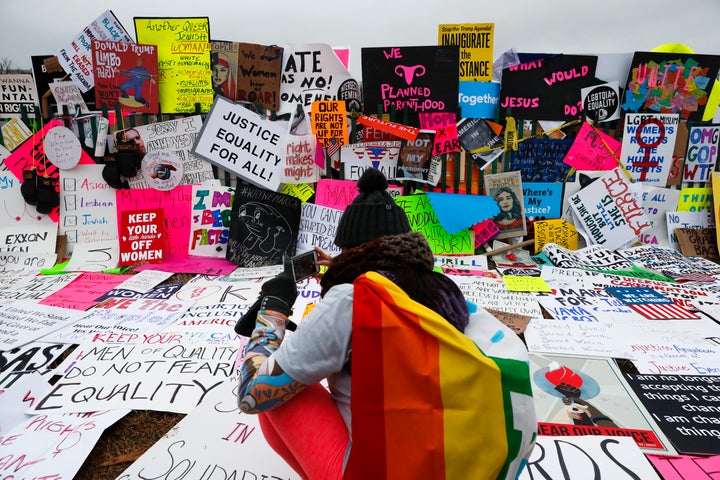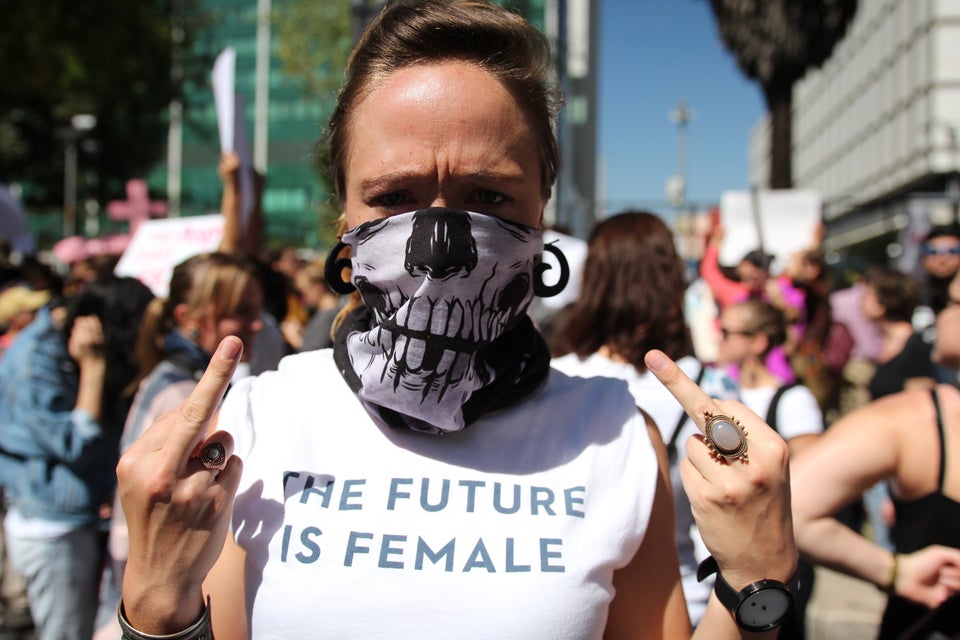
To build a movement, you need to feel solidarity and optimism. You need hope that you can succeed. The marches last Saturday were a wonderful opening to a long and hard campaign and movement. They helped lift the terrible depression and helplessness many of us have been feeling. They sent a message to President Donald Trump and his team, and they revealed to Congress that there are many citizens who are watching them carefully and are going to hold them accountable for the laws they make and unmake.
Across the United States and across the world, we were fighting to keep America great. We were proclaiming our love of democracy, our opposition to the Trump administration’s authoritarian and nationalist proclivities and our desire to ensure a society that respects all its members. It was not a march organized around identity politics but around issues.
Yes, there were those with pussy hats. Yes, there were placards promoting reproductive rights, immigrant protection, marriage equality, environmental concerns, respect for science and for truth and a host of other issues dear to the hearts of many Americans (not just liberals or women). But the real and deep issue was ― is ― our concern that Trump’s presidency signals permission to retreat from civility, to tolerate bigotry and to promote policies that serve a rich business elite at the expense even of those who were among his most fervent supporters.
“The ballot does not express the intensity of the feeling of the voter. Marching can!”
Capitalism and democracy are both experiencing pressure from many directions. They are, after all, still governed by institutions largely designed in the 18th and 19th centuries and then tweaked some in the mid-20th century. We are at an inflection point when we must outline better economic and political practices that suit the world of the 21st century. The demonstrations on Saturday were a means to hit the reset button.
They were not a partisan event but they may well contribute to partisan politics in the most positive way. David Brooks, in his Jan. 24 column in The New York Times, argued that mass movements tend to undermine parties, but that has not always been the case nor need it be the future. Workers’ movements in most capitalist democracies were the source and lynchpin of labor parties. Green movements and anti-immigration movements have affected the platforms of coalitions that govern in countries with proportional representation. Mass movements here and elsewhere can transform parties by providing an alternative way for voices to be heard. One person, one vote is the bedrock of democracy, but the ballot does not express the intensity of the feeling of the voter. Marching can!
Elections are a blunt instrument, and movements even blunter if the aim is guidance for those who enact the policies and laws to make the economy robust, provide infrastructure, mitigate emergencies or deliver services effectively, equitably and at the appropriate price point. Elections may be better at compelling attention to constituents but movements tend to spawn organizations that frame alternative paths for government and for getting attention for specific wrongs. Brooks refers to the civil rights movement as a success, and he calls to task the splintering of other movements but in fact the splintering of the civil rights movement into specialized bodies was a major reason for its success.
“Social movements are key to a process that will compel us all to look more deeply at our economic structures and political institutions.”
It is certainly the case that last Saturday there were those who felt excluded ― a fact that must be corrected in future iterations of the grander campaign to defend American democracy and its international standing. Our common goal as American citizens is to strengthen and, if need be, rebuild our political parties ― both of them. Strong parties in a democracy necessarily represent competitive views of the public weal. We will never all agree — nor should we — on a wide range of policies; we are a country whose greatness is its diversity in perspectives. Our institutions, at their best, enshrine competition, both economic and political. They have survived and thrived so long because of their incorporation of new people, new ideas and new technologies.
Social movements are key to a process that will compel us all to look more deeply at our economic structures and political institutions. Infighting will inevitably occur among the passionate supporters of one approach or another. But the result, if we do our job right, will not be gridlock but progress. The worldwide demonstrations on Jan. 21 were but a first step in a long march to keeping America great.

